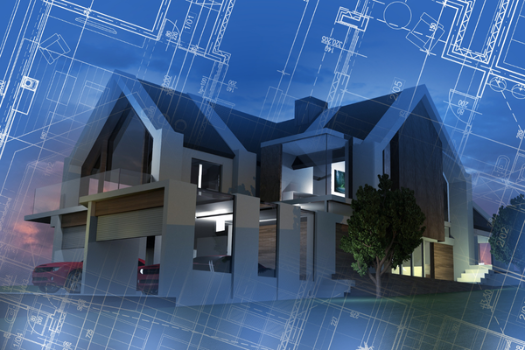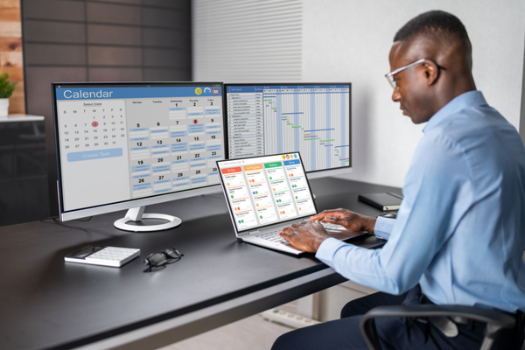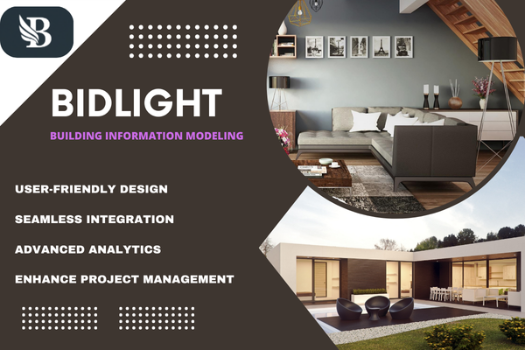
Design Smarter, Build Better: Why BIM is Non-Negotiable
Introduction: The Evolution of Construction Practices
The construction industry has undergone a significant transformation. Traditional methods are being replaced by advanced digital solutions. At the center of this shift is Building Information Modeling (BIM). BIM has changed how construction projects are planned and managed. Instead of relying on outdated tools, BIM offers a smarter way to design, plan, and build. It brings every detail into one shared platform, making collaboration easier. Teams can now identify issues early and avoid costly mistakes.
This article will explore why BIM is no longer optional. It will highlight how BIM improves construction workflows, enhances productivity, and supports better decision-making. For today’s construction industry, BIM is not just a tool; it’s a necessity for staying competitive and efficient.
Understanding BIM: A Comprehensive Overview
Building Information Modeling (BIM) is a game-changer for the construction industry. It creates a detailed digital model of a building. This model represents not just the physical structure but also its functional features. BIM acts as a central hub for information. Teams can access everything they need in one place, from design details to construction schedules. It ensures everyone is on the same page, reducing misunderstandings. This shared platform supports decision-making at every stage, from early planning to demolition.

One of BIM's greatest strengths is integration. It connects design, construction, and operations into one cohesive model. This helps architects, engineers, and contractors work together efficiently. It also improves accuracy by identifying potential issues before construction begins.
With BIM, projects are managed smarter. It allows better planning, smoother workflows, and fewer mistakes. For the construction industry, BIM is not just about technology—it’s about transforming how teams collaborate and succeed.
The Imperative of BIM in Modern Construction
In today’s fast-paced construction world, efficiency and precision are essential. Building Information Modeling (BIM) has become a must-have tool to meet these demands. It addresses common construction challenges by improving how teams collaborate, plan, and execute projects.

BIM enhances collaboration. It creates a shared platform where architects, engineers, contractors, and owners can work together. This reduces miscommunication and prevents costly mistakes. Everyone has access to the same, up-to-date information, ensuring the project stays on track.
Accuracy is another key benefit of BIM. With detailed 3D models, stakeholders can visualize the entire project before construction begins. This eliminates discrepancies and ensures everyone understands the plan clearly. BIM also saves time and money. By identifying issues early in the design phase, it prevents expensive rework and delays. Teams can focus on completing tasks efficiently, improving overall productivity.
In modern construction, where deadlines are tight, and budgets are strict, BIM is not optional. It’s a tool that drives smarter decisions and better outcomes, making it an essential part of every successful project.
BIM's Role in Streamlining Project Management
Project management is the backbone of any successful construction project. Building Information Modeling (BIM) has become a vital tool for streamlining this process. By offering centralized information and advanced capabilities, BIM helps project managers handle challenges more effectively.
One of BIM’s greatest strengths is its ability to provide centralized information. It acts as a single source of truth for all project data. This ensures that everyone has access to accurate, up-to-date details. Teams can rely on BIM to keep track of plans, schedules, and tasks without confusion.

BIM also plays a key role in risk mitigation. It allows project managers to simulate different scenarios and predict challenges before they arise. By identifying potential risks early, managers can implement solutions and keep the project on schedule and within budget.
Another benefit of BIM is resource optimization. It ensures materials and labor are used efficiently, avoiding waste and reducing costs. With BIM, teams can allocate resources smartly, boosting productivity and maintaining focus on the project’s goals.
By combining centralized information, risk management, and resource optimization, BIM transforms project management into a more efficient, seamless process.
Integrating AI with BIM: The Future of Construction
The combination of Artificial Intelligence (AI) with Building Information Modeling (BIM) is changing how construction projects are planned and executed. This powerful partnership is paving the way for smarter, more efficient workflows. AI brings predictive analytics to BIM. By analyzing project data, AI identifies potential issues before they arise. This allows teams to make proactive decisions and avoid costly delays. With AI, project managers can foresee challenges and keep construction moving smoothly.

Design optimization is another significant benefit of AI. Using historical data and industry best practices, AI suggests improvements during the design phase. This leads to better, more efficient plans that reduce errors and save time. AI also automates routine tasks in BIM. Time-consuming processes like clash detection and quantity take-offs are handled quickly and accurately. This frees up professionals to focus on strategic decisions and creative problem-solving.
The integration of AI and BIM is transforming construction. It enhances decision-making, improves designs, and increases productivity. For the construction industry, embracing this technology means staying ahead in a competitive and ever-evolving field.
BidLight: Elevating BIM Implementation
BidLight takes BIM implementation to the next level, offering a platform that enhances how projects are managed and executed. It combines advanced tools with a user-friendly design, making BIM more accessible and efficient for everyone involved.
BidLight ensures seamless integration with existing BIM models. This creates a unified environment where all project data is connected and easy to access. Teams can collaborate effortlessly, keeping projects on track and minimizing delays.

One of BidLight’s standout features is its advanced analytics. The platform provides deep insights into project performance, from resource allocation to construction scheduling. These insights help stakeholders make better decisions and improve overall efficiency.
BidLight’s user-friendly interface is another key advantage. The platform is designed to be intuitive, so users of all technical levels can navigate it with ease. Whether you’re tracking project milestones or managing documentation, BidLight makes complex tasks simple and straightforward.
By enhancing collaboration, streamlining workflows, and improving decision-making, BidLight empowers construction professionals to get the most out of BIM. It’s not just a tool—it’s a partner in driving smarter, better-managed construction projects.
Conclusion: Embracing BIM for a Competitive Edge
The construction industry is evolving, and adopting BIM is now a necessity for staying competitive. With tools like BidLight, professionals can fully utilize the power of BIM to design smarter and build better. BidLight enhances collaboration, streamlines workflows, and integrates advanced technologies to ensure every project is efficient and cost-effective. It transforms complex processes into manageable tasks, helping teams deliver high-quality results on time and within budget.
By embracing BIM with platforms like BidLight, construction professionals can achieve a new level of productivity and success, setting themselves apart in an ever-changing industry.